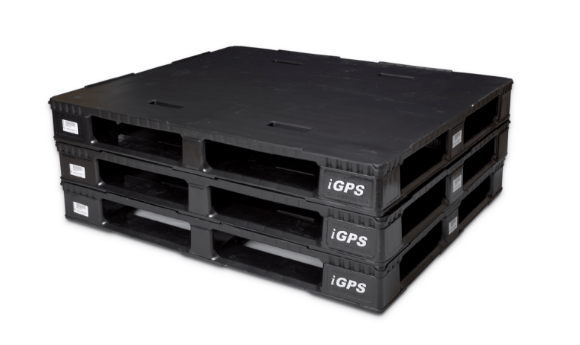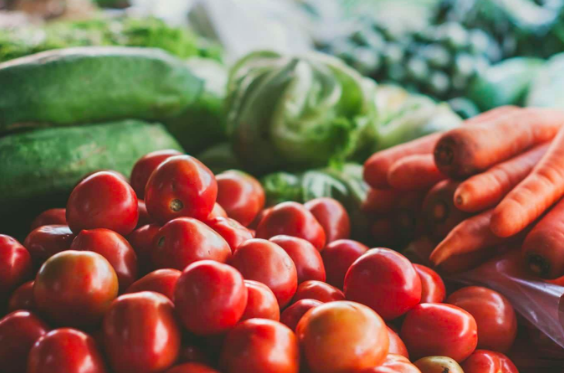Recently, consumers were told to avoid romaine lettuce from Yuma, Arizona due to E. coli contamination that made 98 people ill. Since it’s difficult for consumers (and sometimes even for grocery stores) to be certain where their lettuce is from, as a result, most people completely avoided romaine lettuce for a time, which affected the entire produce industry.
It isn’t easy being in the grocery business, and if you’re involved in food logistics, you know that contaminated and unsafe food is a huge risk. It’s certainly one of the biggest concerns on the minds of growers, retailers, and supply chain managers. Not only must contaminated product be destroyed, wasting the money and labor used to process and transport it, but batches of product that went through the same processes must be discarded as well to ensure safety. This means that a single report of unsafe food can very quickly cause massive losses for a grocery business that operates with a minimal margin of profit. The romaine lettuce crisis highlights the damaging effect contaminated product can have on companies in the food industry and emphasizes how important it is to isolate food from potential contaminants. So, how can companies ensure the safety of the food they transport?
Safety in Food Logistics Starts with FSMA Compliance
The Food and Drug Administration’s (FDA) new Food Safety Modernization Act (FSMA) regulations recognize that in many cases foods should be kept at low temperatures to discourage bacterial growth. It mandates temperature tracking for raw foods like meats, and many of the new rules are concerned with ensuring that food carriers and handlers record and report temperatures as food is transported and stored along the supply chain. Other portions of the FSMA are focused on making sure that food is handled and shipped in a clean environment.
In short, FSMA regulations require that your supply chain equipment and facilities are kept cool if necessary, are sanitary and easy to clean, and that controls are in place to prevent contamination of food by debris, chemicals, and bacteria or fungi. Any company involved in food logistics recognizes that it’s important to comply with these requirements not just because of potential fines, but, more importantly, because of the serious consequences to reputation and to the bottom line if unsafe substances contaminate fresh food. Yet even though companies spend much time and money to ensure food safety, they often ignore a major vector for cross-contamination in food: the humble wood pallet.
Pooled Wood Pallets May Be Compromised
Modern food logistics is built around being able to move heavy loads of goods by stacking them on a pallet and lifting them using machinery. However, the majority of pallets used in the grocery supply chain are wood pallets, and, due to the material they’re made from, they carry a risk of contaminating food.
Wood pallets can also leave behind wood splinters, chips, and even boards which can contaminate food handling and food processing areas.
Wood is an absorbent material, and it can pick up fluids—and bacteria—from the food transported on it and carry it for a long time. Given that reusable wood block pallets can be expected to make 15 to 20 trips through the supply chain, this creates numerous opportunities for the bacteria stored deep in the wood to contaminate food later. Advocates in the wood pallet industry say that bacteria once absorbed tends to stay contained in the wood; in theory, the bacteria are trapped and unable to contaminate food. Not only is this a worrisome point to hear in the context of a discussion on food safety, but it ignores other issues wood has, such as its propensity to crack and splinter in the face of hydraulics and heavy machinery. This creates splinters and loose nails that can damage packaging and introduce microbes into food. Wood pallets can also leave behind wood splinters, chips, and even boards which can contaminate food handling and food processing areas. Difficult to notice and untraceable, these fragments of wood can be one of most insidious sources of food contamination.

Wood pallet pooling programs do make an effort to keep their pallets safe. Pallets are inspected and some are given heat treatments to kill microbes like bacteria, molds, and fungi. But due to wood’s nature, these efforts are insufficient to guarantee food safety. There are just too many ways that a wood pallet can be compromised, including:
- Improper Handling: Wood pallets are frequently subjected to careless handling, which can damage them and leave splinters and nails to puncture and even invade food packaging. Wood pallets might be carelessly set in fluids from meat or in spilled chemicals and allowed to go through the supply chain without discovery.
- Improper Storage: If you go behind any grocery store you will see pallets of all types stored in stacks near the loading bays. This exposes wood pallets to atmospheric moisture that undoes heat treatments, opens them up to mold growth, and encourages bacteria in the wood to begin reproducing. It also exposes the pallets to local insects and wildlife.
- Miscommunication: An inability to correctly communicate information is the biggest hazard in any supply chain, but it’s an especially critical issue in food logistics. A miscommunication about where a platform came from can result in a load of raw food being placed on a pallet that transported meats; in this situation, the error will likely go unnoticed since the fluids are absorbed into the wood.
Because of the nature of human error, none of these issues can be completely prevented through procedure. However, they can be prevented by reinforcing procedures while using a platform that is easier to clean and non-absorbent—like an integrated pallet made of durable plastic.
Plastic Pallet Pooling Ensures Food Logistics Chains Remain Safe

Plastic pallets give you greater control over food safety by being easier to sanitize and significantly more durable than wood pallets. Plastic is impervious to water that can carry microbes and to chemicals that can cause illness if ingested. As plastic platforms are non-absorbent, fluids on them are difficult to miss, which acts as a built-in layer of security against contaminants—and employee inattention—that can render food unsafe. Plastic pallets are also resistant to insects and other pests that can contaminate food with their presence.
Switching to plastic pallets enhances the security and safety of your product, making food logistics simpler.
Since plastic isn’t prone to splintering and doesn’t have nails, it will not damage or puncture product packaging. Plastic pallets are much more resistant to damage due to rough or improper handling than wood and they do not splinter, removing a vector for food contamination entirely.
Switching to plastic pallets enhances the security and safety of your product, making food logistics simpler. A plastic pallet pooling program makes switching even easier. A pooling service will provide a supply of plastic pallets for your company’s supply chain and will handle your pallet management to ensure a safe, sanitary supply of plastic pallets is always ready to take your food where it needs to go.
To make fresh food logistics simpler and easier with the iGPS pallet, and to offer increased safety to your workers, retail partners, and consumers, give our team a call at 1-800-884-0225, email a specialist at switch@igps.net, or visit our contact page.



